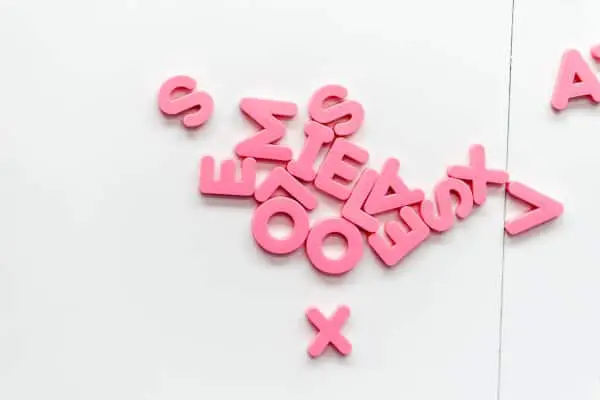Commas are one of the most commonly misused punctuation marks in English writing; Even many native speakers get it wrong, so don’t feel bad if these little marks still confuse you. Using the comma is actually easy, if you know some of its simple uses!
The comma has a few primary uses, such as: being placed before conjunctions in complex sentences, signaling that a piece of the sentence has moved from its regular place in a sentence, and separating the items in a list. Other uses include: in dates, reported speech, and for introductory phrases.
We have already looked at one of the most common comma mistakes people make when writing, which is the comma splice. If you haven’t already read that article, give it a read or keep reading for a quick recap.
Comma Splices
A comma splice happens when we use a comma to join together two independent sentences. Here’s what that looks like:
 The boy likes ice cream, he eats a lot of it.
The boy likes ice cream, he eats a lot of it.
You can see that one sentence is actually made up of two different sentences.
The boy likes ice cream.
He eats a lot of it.
In English, it is wrong to join together these two sentences using only a comma. We must use a conjunction or a semicolon to do this. We could always leave them as two separate sentences as well and use a period.
If you want to learn more about this, read my article about comma splices here.
Today, we’re going to look at the most common ways to use the comma in English writing. Let’s get started.
Before Conjunctions
One of the most common situations where we see commas being used is after a conjunction. A conjunction is also called a linking word, because we use these words to join sentences together.
 The boy likes ice cream, so he eats a lot of it.
The boy likes ice cream, so he eats a lot of it.
This sentence is the same as our sentence from above, but this time we used a conjunction (so) to link them together instead of only a comma. There are many different conjunctions in English, and they have different kinds of uses. A useful way to remember some of the most common English conjunctions is with the acronym FANBOYS.
For
And
Nor
But
Or
Yet
So
If you memorize this phrase, FANBOYS, you’ll be able to remember some commonly used English conjunctions very easily.
Careful!
The word “and” has many different uses. When we use it to join together two independent sentences, we use a comma before the word.
 He likes blue, and she likes pink.
He likes blue, and she likes pink.
However, if we’re using “and” to join together two words in the same sentence, then we do not use a comma!
 The flower is yellow, and white.
The flower is yellow, and white.
 The flower is yellow and white.
The flower is yellow and white.
Only use a comma if you’re joining together separate sentences!
Signal Movement
Another situation where we use a comma is if a part of the sentence has move from its regular place in the sentence. What does that look like?
Before eating the hamburger, please pay.
This is a sentence where a piece of it has moved from its regular place. We know this because of the comma after hamburger. Is there a way to write this sentence without using a comma? Yes!
Please pay before eating the hamburger.
In this example the phrase “before eating the hamburger” is able to move from the back of the sentence to the front. If we do this we must use a comma to show that it has moved. Here are a few more examples:
 Today, let’s visit the library.
Today, let’s visit the library.
 Today let’s visit the library.
Today let’s visit the library.
 Let’s visit the library today.
Let’s visit the library today.
If we move the word “today” to the front of the sentence we need to use a comma, however if we keep it in its place at the end of the sentence we do not need it.
These types of phrases are known as introductory phrases. They introduce information to the reader first before the rest of the sentence. Such as “before eating the hamburger” in the first sentence and “today” in the second.
Separate Lists
We also see commas being used very often in lists. They are used to separate the items in a list.
![]() My favourite colours are blue, red, and yellow.
My favourite colours are blue, red, and yellow.
Notice that after every item in the list we use a comma to separate it. This method is known as the oxford comma. Since it is very easy to remember, you should always separate each item in a list using a comma.
However, be careful with longer sentences. Do not use a comma to separate the last item in the list from the rest of the sentence.
 I like reading, hiking, and cooking, very much.
I like reading, hiking, and cooking, very much.
 I like reading, hiking, and cooking very much.
I like reading, hiking, and cooking very much.
Reported Speech
If we want to use a quote in our writing, then we have to use a comma too!
“This spaghetti is delicious,” he said.
Notice that the comma is inside of the quotation marks. If the quote comes before the phrase “he/she/it said”, then the comma will appear inside of the quotation marks.
 “This spaghetti is delicious”, he said.
“This spaghetti is delicious”, he said.
However, if the quote comes after that phrase then the comma is not inside the quotation marks.
 He said, “This spaghetti is delicious!”
He said, “This spaghetti is delicious!”
 He said “,This spaghetti is delicious!”
He said “,This spaghetti is delicious!”
Make sure you’re careful about where the quote is placed. If you put the quote first, the comma goes inside the quotation marks. If the quote comes last, the comma goes outside the quotation marks.
Dates
The final use we’ll talk about today is with dates. When you want to write a date into a sentence you do so like this.
 March 08, 2020, is today’s date.
March 08, 2020, is today’s date.
If you’re writing the date as month-day-year, then separate the year using commas.
 Today is Sunday, March 08, 2020.
Today is Sunday, March 08, 2020.
Separate using a comma if you include the day of the week too.
 The date is 08 March 2020.
The date is 08 March 2020.
You do not need to use any commas if you are writing the date as day-month-year.
These were some of the most common uses for commas in English writing. Remember that the comma is most commonly used to separate independent pieces of a sentence, such as when a conjunction joins two independent sentences into one, when important information is moved to the front of the sentence from its regular place, and when quotes or dates are separated from the rest of the sentence. Keep these in mind when you’re writing and you’ll find that your mistakes with commas will disappear!



